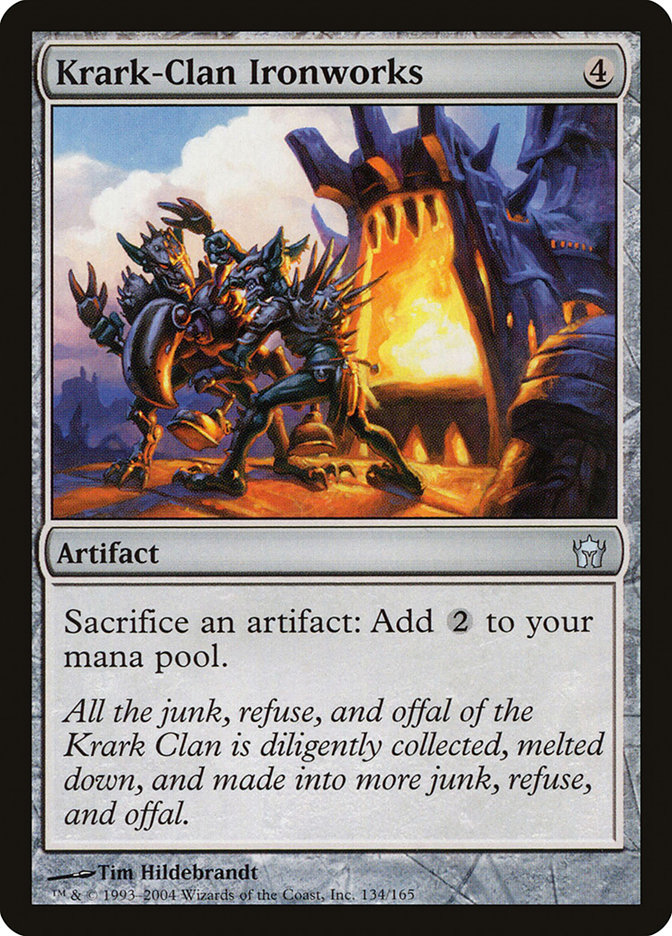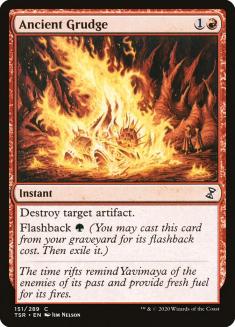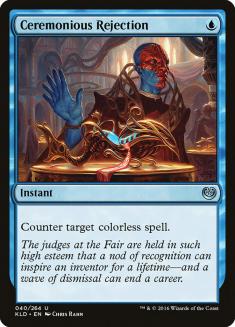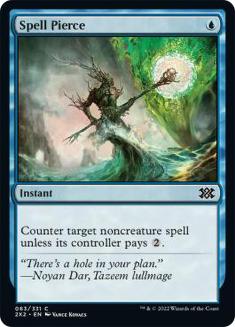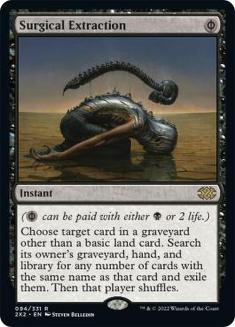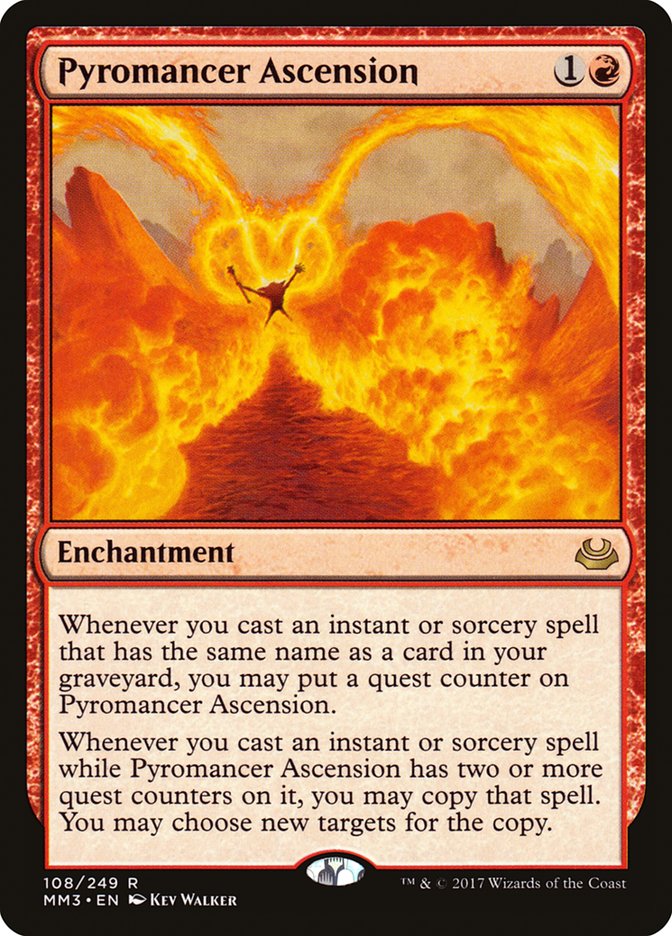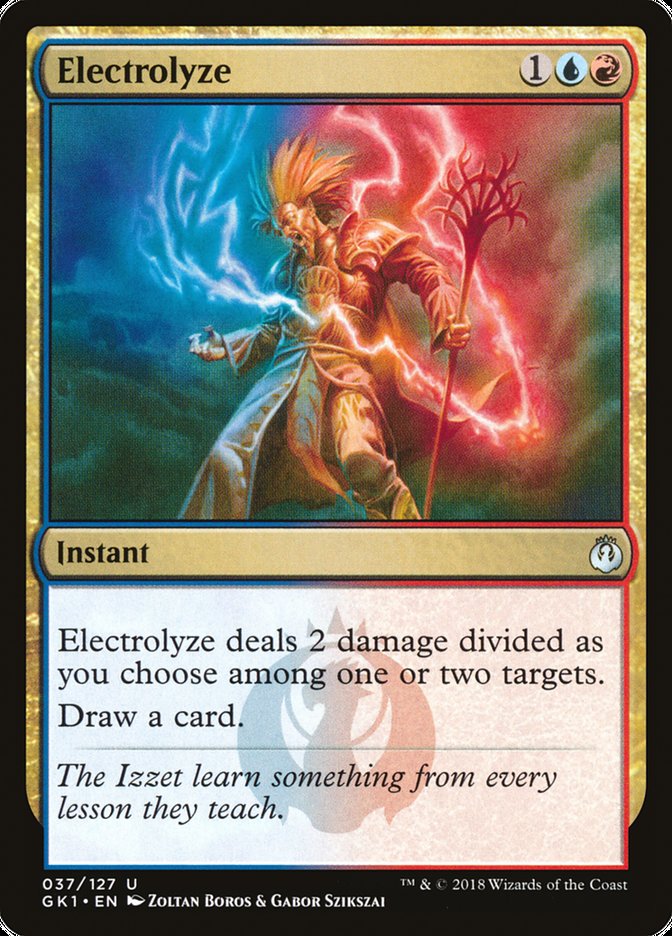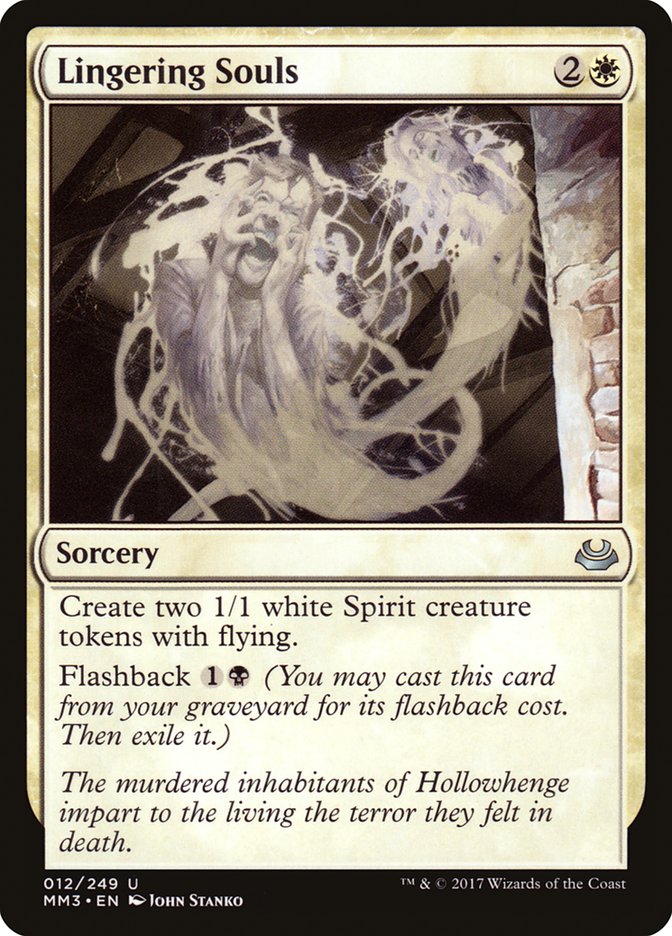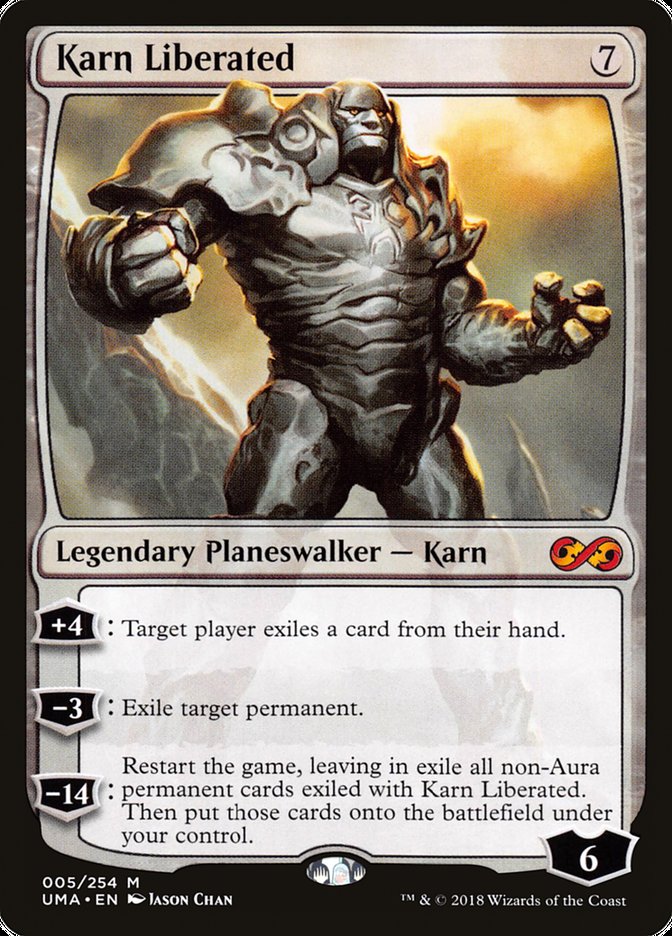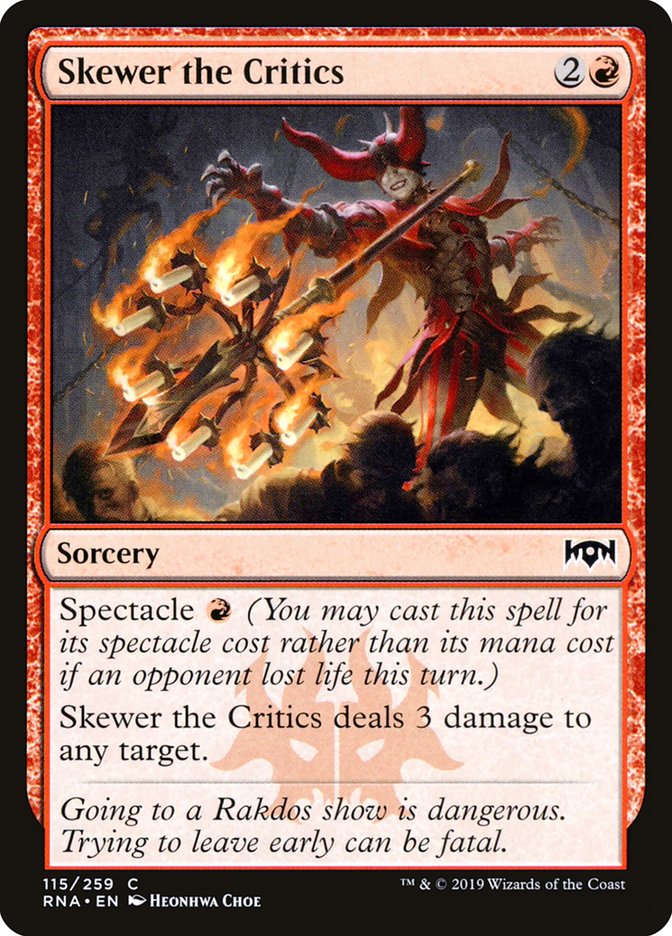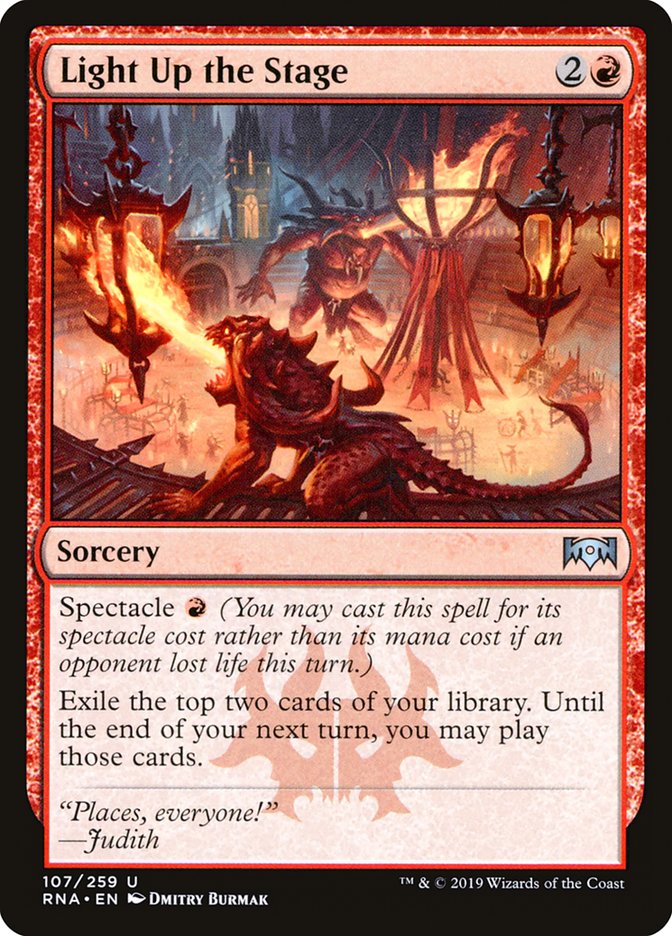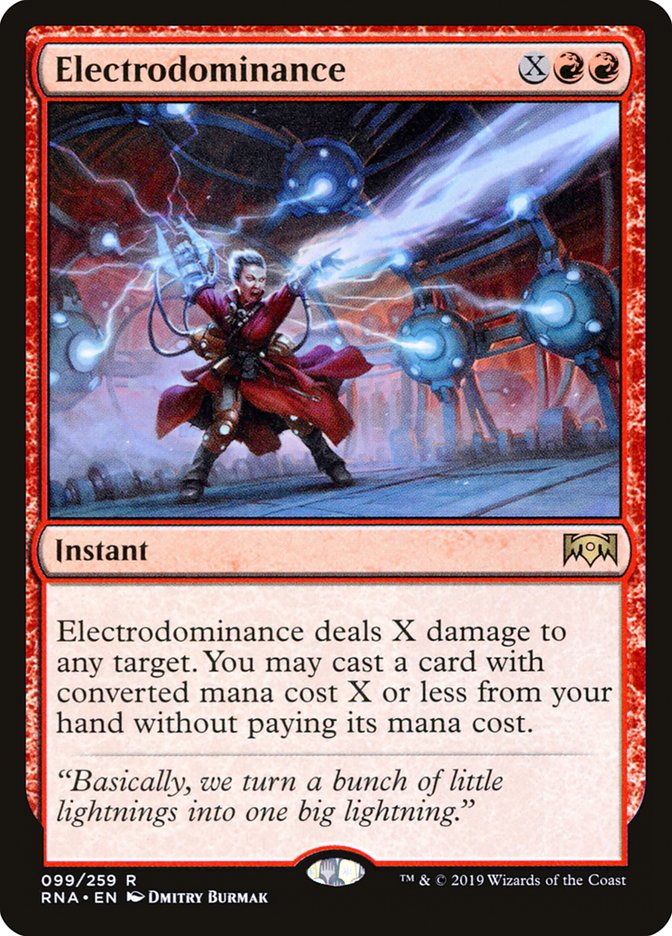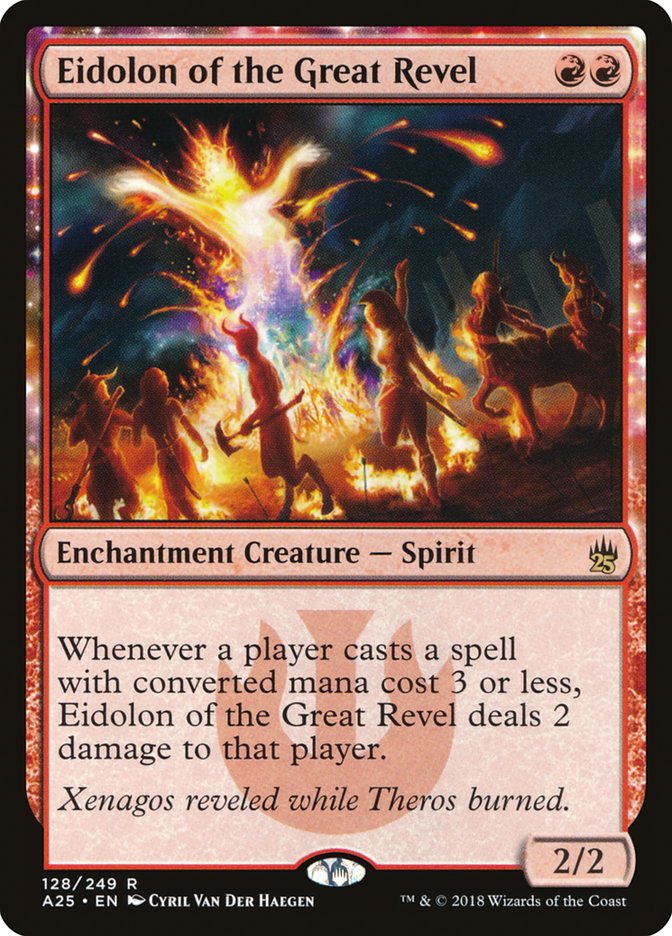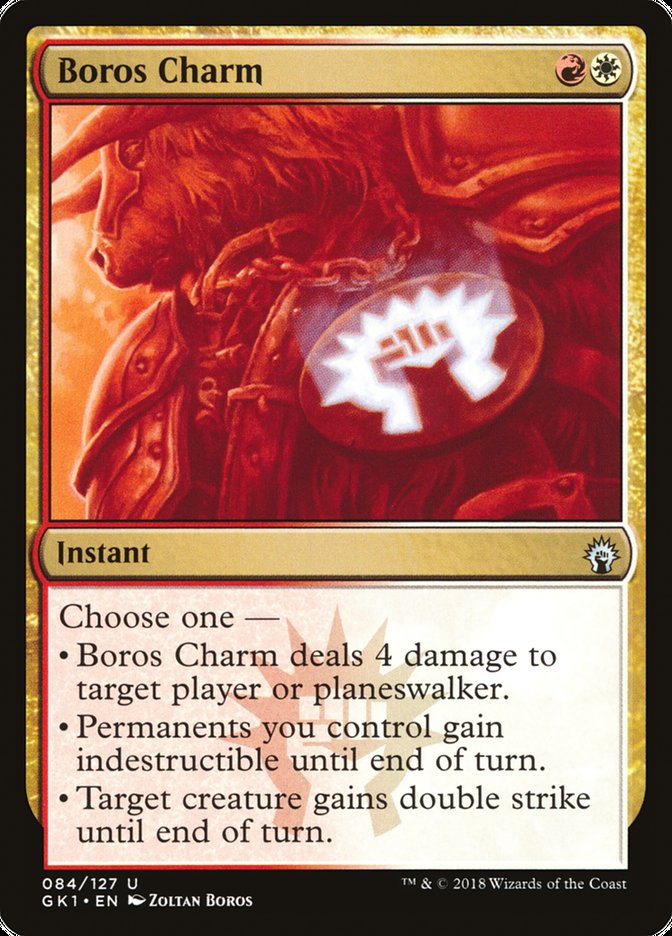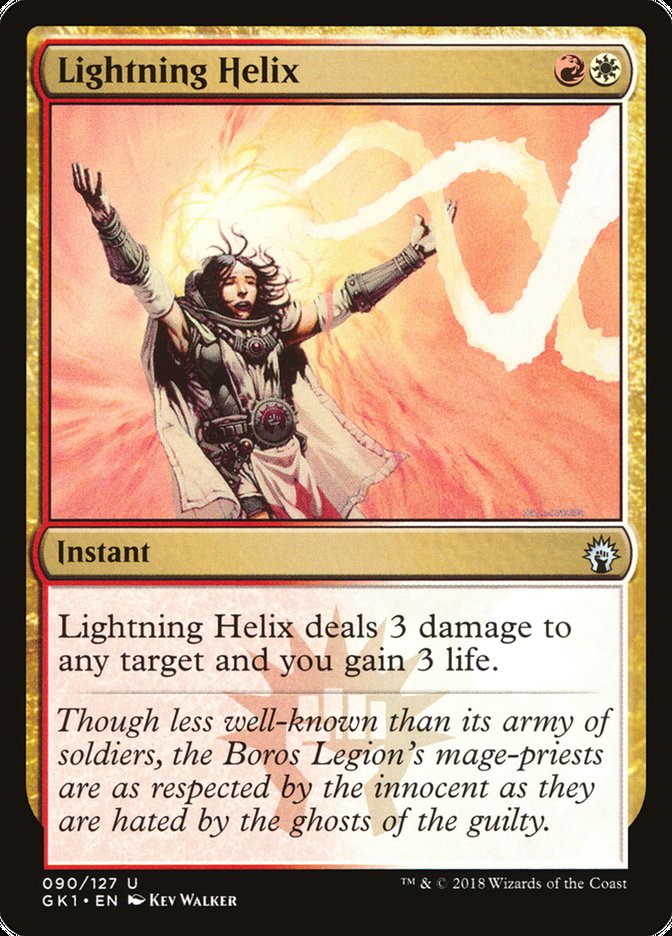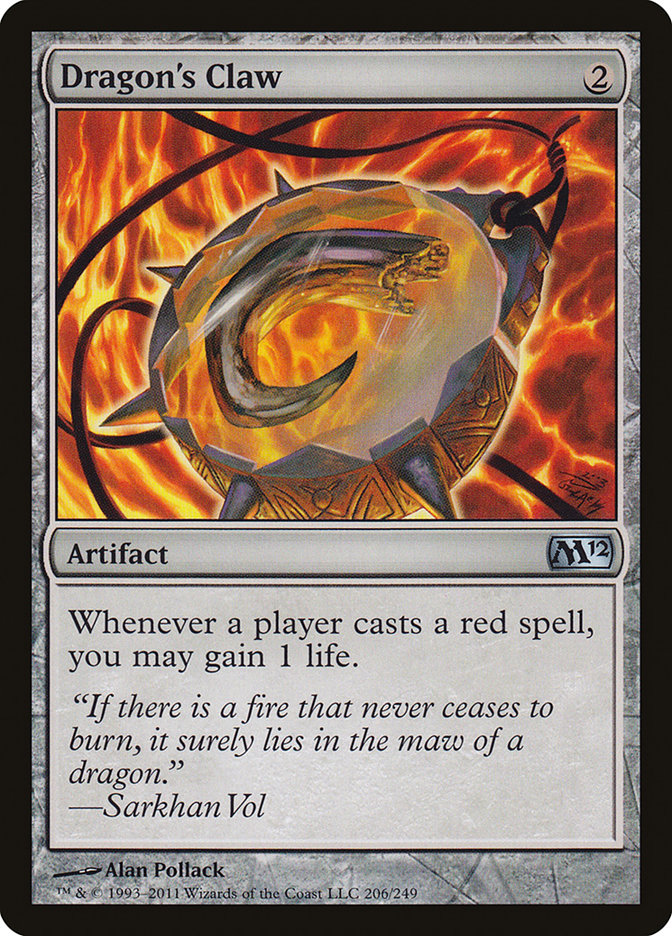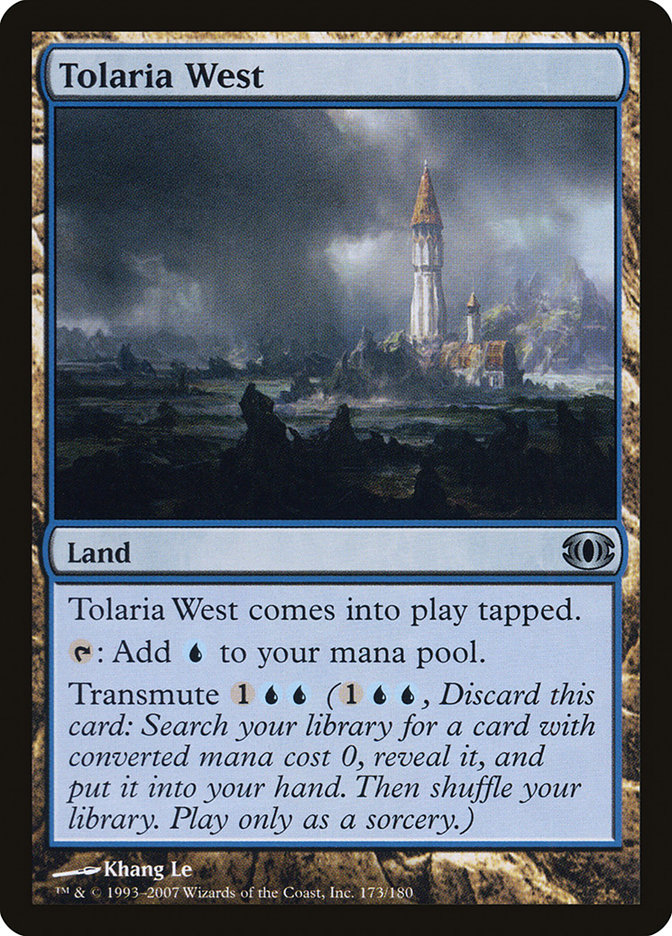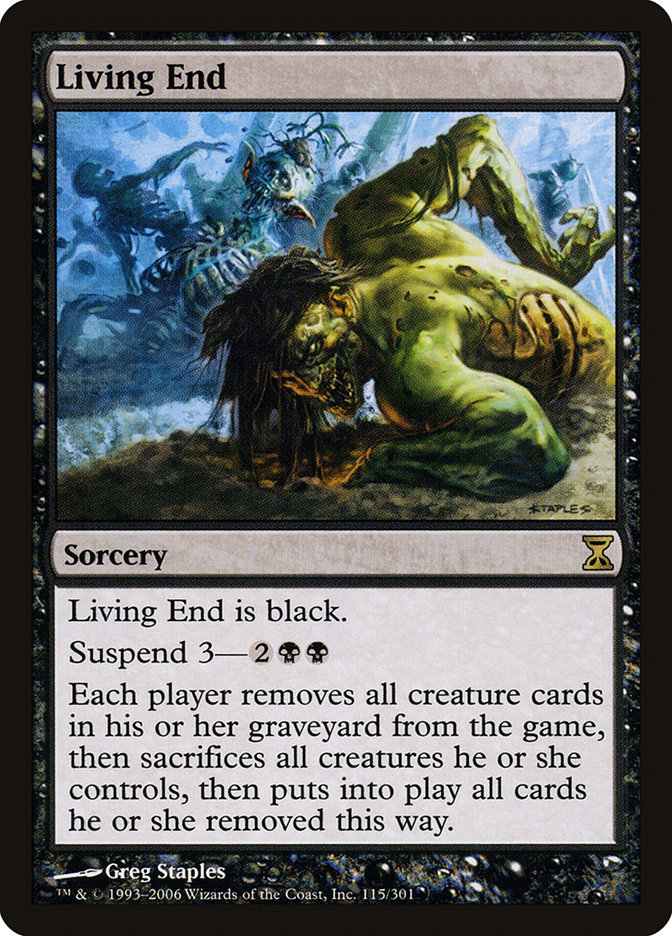It’s been an exciting couple of weeks for Modern. With Krark-Clan Ironworks
getting the axe
and Ravnica Allegiance hitting shelves last Friday, the Modern
metagame is beginning to shift more than one would expect.
Krark-Clan Ironworks, in particular, had its own effect on the metagame,
and looking at how decks were built before its banning does a good bit to
help us look at the beginning of the most immediate changes going forward:
Creatures (12)
Lands (18)
Spells (30)

Taking a look at Dylan Donegan’s sideboard, that’s a lot of real
estate being eaten up by cards to fight against Ironworks.
That’s discounting the fact that there’s a strong argument to be made for
Flame Slash being able to take out Sai, Master Thopterist.
One of the benefits to Ironworks abusing so many different axes in order to
combo was that there were several cards that had applications against it,
but its resiliency demanded several interactive pieces in order for it to
be stopped completely.
Take a look at Tariq Patel’s sideboard from last weekend’s Modern Classic:
Creatures (11)
Lands (18)
Spells (31)
- 4 Lightning Bolt
- 4 Serum Visions
- 4 Opt
- 2 Lightning Axe
- 4 Manamorphose
- 2 Gut Shot
- 4 Faithless Looting
- 4 Thought Scour
- 1 Izzet Charm
- 2 Light Up the Stage
Sideboard

Zero copies of Ceremonious Rejection? Abrade over Ancient Grudge? Without
having to worry about Ironworks, sideboards can play cards that cover more
bases and not be forced into dedicating as many cards to a single matchup.
This diversification of sideboard slots is going to mean a couple of
things: sideboards are going to be less focused, and this is going to open
a window of opportunity for decks that need more committed hate in order to
be combated.
Creatures (18)
Lands (19)
Spells (23)

Dredge players, you have a week.
Ironworks was one of Dredge’s bad matchups, and with that deck leaving the
format and sideboards being unfocused for a couple of weeks, Dredge is in a
prime position to make waves. Once people realize what deck(s) they need to
be fighting, the focus will shift and people will use the newly-vacated
slots in the sideboard to hate on graveyards as soon as they realize that
Dredge is a real player.
Creatures (10)
Lands (18)
Spells (32)

On the “fairer” side of things, we have Ross Merriam’s take on Izzet
Phoenix from last weekend. Outside of the spattering of fun-ofs in the
sideboard, there’s a key player in this maindeck to take note of:
Pyromancer Ascension is being used as a way to simply double the power of
cantrips in this deck, which is worth a ton against the decks that are
leaning on Path to Exile to clean up the threats from Izzet Phoenix. Izzet
Phoenix is a deck that’s historically strong against the removal-heavy
archetypes of the format, but those decks have adapted, and Ascension is a
tool that helps Phoenix grind into the lategame.
Lands (21)
Spells (39)

Artifacts.
Whir Prison may not be the specific archetype, but the final big winner
from the Ironworks ban is the artifact decks that people are going to feel
safe from on the short term. Whir Prison, Lantern, and the various Arcbound
Ravager decks are all poised to have a great weekend.
The artifact decks that exist in today’s Modern format are hyper-redundant.
That’s to say that they aren’t going to be folding to a single piece of
interaction, as they had to survive in a world that included people trying
desperately to hate out Ironworks. Without that hate being present, it’s
easy mode.
An easy trap to fall into is to be under the assumption that this is a good
weekend to bust out your favorite grindy deck. These decks suffered
previously because it was near-impossible to Thoughtseize or Logic Knot
every single copy of Krark-Clan Ironworks or Scrap Trawler that Ironworks
had access to in each game. With the deck gone, there’s a natural
inclination to gravitate in this direction, but that’s very much incorrect.
Outside of the artifact decks, most of the other larger decks in the format
suffer against the fair midrange and control decks.
Sleeving up Jund on a weekend that Dredge and Izzet Phoenix are in prime
position is not a good idea. The same can be said for Mardu Pyromancer and
most Celestial Colonnade decks.
That’s not even getting into the problems that these decks have with The
Big GuysTM.
The format’s most difficult-to-disrupt turn 3 deck left the format. That
sounds great for the decks that don’t start playing the game until
turn 3 or 4.
Creatures (13)
Lands (25)
Spells (22)

With Ironworks out of the picture and all the aforementioned decks being
pushed out of the picture, it’s probably time for Becky Adlman to go ahead
and just win an Open.
Lands are still difficult to interact with, and Blood Moon wasn’t catching
on when Amulet Titan was one of the biggest decks in the format. It’s
completely unsurprising to see Valakuts spike the first large Invitational
Qualifier after the banning of Krark-Clan Ironworks.
On the other hand, Blood Moon is a card that decks didn’t have room for
before but do now.
The biggest takeaway from all these decks is that other linear decks are in
a good spot to get a “free” weekend: a weekend without people hating their
deck out before realizing how hard it is to otherwise beat.
Ravnica Allegiance
Bannings aren’t the only thing breathing change into Modern.
Red got a bunch of new tools with Ravnica Allegiance, and players
are already making use of them.
Creatures (14)
Lands (19)
Spells (27)
- 4 Lightning Bolt
- 4 Lava Spike
- 4 Rift Bolt
- 3 Shard Volley
- 4 Searing Blaze
- 4 Light Up the Stage
- 4 Skewer the Critics
Sideboard

Creatures (10)
Lands (20)
Spells (30)

These are the two decks doing the “newest” things from last weekend’s
Modern Classic, and there’s a lot to digest from both, so looking at them
one at a time…
Creatures (14)
Lands (19)
Spells (27)
- 4 Lightning Bolt
- 4 Lava Spike
- 4 Rift Bolt
- 3 Shard Volley
- 4 Searing Blaze
- 4 Light Up the Stage
- 4 Skewer the Critics
Sideboard

Ryan Ferries has been playing Burn constantly for a year now, with a
spattering of Classic Top 8s and a finals appearance in Indianapolis last
year. This list of his is something he’s undoubtedly been thinking of for a
while, and there isn’t much I would change about the spells in the deck.
The plan that Skewer the Critics opens up is simply being a bit lower to
the ground and having a quantity of one-drops.
Couple this with Light Up the Stage, and it’s easy to start toying with the
idea of playing eighteen or nineteen lands. It’s a subtle change, but over
the course of a tournament, having this heightened spell-density is going
to be the deciding factor in more than one game.
The only thing I’d be looking to change about Ferries’ deck is putting the
sideboard copies of Blood Crypt and Sacred Foundry into the maindeck over
Mountains, and then find room for three Skullcracks in the sideboard. The
most important thing to note about this take on the deck is that it’s
consistent, which is about all that a Burn player can ask for. One of the
biggest ways that Burn tends to lose games is to getting choked on two-mana
spells, and this take on the deck reduces the odds of that happening.
Creatures (10)
Lands (20)
Spells (30)

On the note of jamming one-drops, Richard Mulligan is taking an entirely
different approach. Notice anything missing from the maindeck? Look at the
sideboard and it sticks out like a sore thumb.
Rather than having any copies of Eidolon of the Great Revel for Game 1,
Mulligan has chosen to really lean into having a pile of one-drops and not
wanting to punish himself in the process for doing so.
“Punish himself?”
When there are decks that can race Burn, Eidolon of the Great Revel can
actually be an enormous liability. If its controller finds themselves
behind on life, suddenly it becomes impossible to win. This conundrum is
exacerbated by the “overload on one-drops” plan that Skewer the Critics has
created.
Without the white cards from the Boros version of Modern Burn, Burn’s cards
are less powerful on average, and Burn must cast more of those spells in
order to win. More spells equals more damage from Eidolon.
The expectation that Burn players must be casting more spells is affecting
how people are looking at sideboarding against the deck as well. Remember
Tariq Patel’s sideboard from earlier?
Creatures (11)
Lands (18)
Spells (31)
- 4 Lightning Bolt
- 4 Serum Visions
- 4 Opt
- 2 Lightning Axe
- 4 Manamorphose
- 2 Gut Shot
- 4 Faithless Looting
- 4 Thought Scour
- 1 Izzet Charm
- 2 Light Up the Stage
Sideboard

There’s some nice 2014 Burn sideboard tech looming in there.
If the opponent is planning on casting more spells, playing the card that
punishes them for doing so is a great way to play.
Finally, a moment to talk about a card that
I’ve already written about the Modern applications of
, and is near and dear to my heart: Electrodominance.
Creatures (16)
- 1 Faerie Macabre
- 2 Architects of Will
- 4 Curator of Mysteries
- 4 Desert Cerodon
- 1 Nimble Obstructionist
- 4 Striped Riverwinder
Lands (20)
Spells (24)

Magic Online grinder BobTheDog was able to reach the semifinals of the
Modern Challenge last weekend with his take on casting Living End via
Izzet-colored spells, and the rest of the internet took notice. In the time
since their finish, Living Dominance has been on every Modern decklist
dump, with builds tweaking cards here and there but always being fairly
close to this shell.
BobTheDog’s decision to include Tolaria West as a way to search up combo
pieces even allows for a small package of cards that can hose entire
strategies. There’s some seriously powerful stuff going on here.
It turns out that the traditional Living End deck was always pretty close
as a linear one-trick pony, but when Cryptic Commands, Remands, and other
interactive spells are thrown into the mix, the deck is a real player.
All kidding aside, the backup plan of the Jund-colored Living End deck was
always to start just jamming its creatures as the big clunky Draft chaff
they were planned to be, but with the interactive spells in this deck, that
plan is far more realistic. That’s not even getting into the fact that
Curator of Mysteries is a reasonable costed spell on its own, and it having
a text box that plays well as a threat in a deck with a million cards that
cycle can’t be understated.
If a single deck were to come out of left field and blow the tournament out
of the water, my money would be on this one. It’s doing something that
generally requires hate cards to answer, but can easily go about its
business and win a heads up game of Magic in the face of those hate cards.
Do Something Broken That Nobody Is Expecting
The point with all these decks is that they can be answered. Most of them
are doing something that’s abusing some easily-exploited axis of Magic, be
it busted artifacts, graveyards, land stuff, or some other [thing]. Most
people are going to be expecting some subset of cards, and the key to
succeeding in a Modern metagame that’s wide open is doing something as
powerful as you can while dodging the hate cards for your powerful
strategy.
As good as these decks are at making Thoughtseize embarrassing, maybe it’s
just time to Ad Nauseam people…


